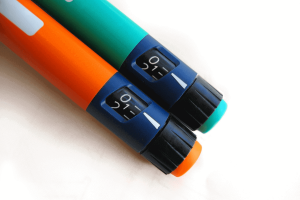How does age affect diabetes?
It’s no secret that our bodies start to slow down as we get older, making it difficult to stay active. Add diabetes into the mix, and maintaining a healthy lifestyle can become even more of a challenge.
According to WebMD, one of the greatest risk factors for diabetes is age. In fact, a person’s risk of developing type 2 diabetes increases dramatically after age 45. High blood pressure, heart disease, and obesity are all conditions that also become more common with age, especially when a person is diagnosed with diabetes.
In addition to providing a greater risk for health concerns, studies have shown that diabetes may also speed the aging process in some adults. Diabetes that goes unregulated and untreated can worsen failing eyesight, add further damage to the kidneys, and complicate arthritis. Researchers are currently studying the effects diabetes has on dementia, but some already argue that diabetes can worsen the symptoms of diseases such as Alzheimer’s.
Because diabetes is a condition that requires constant monitoring and attention, it can be difficult for people to manage as they get older. Staying active, remembering to record blood sugar levels, and keeping track of several prescriptions can be tiring at any age. Fortunately, all it takes is a few small changes–and a little help along the way–to keep on track.
When it comes to living a healthy, active lifestyle, remember that even a little exercise can do the body good. A brisk stroll around the mall, a quick lap in the pool, or even a short strength-training routine home can make a big difference in your overall health and diabetes management. Just 30 minutes of activity, five days a week can help you lose weight, lower your blood sugar, and help prevent further complications.
Remembering to check your blood sugar and take your medicines can also be tricky with age, especially if you’re juggling more than one prescription. To stay organized, try keeping a journal. There, you can write your blood glucose levels as you take them before and after meals and around bedtime. You can also write yourself helpful reminders for when it’s time to take and refill your prescriptions.
If keeping a logbook isn’t for you, there are also several apps created to help you take control of your diabetes. Available on iOS and Android devices, MedSimple is an easy-to-use app that will send you helpful reminders when it’s time to take your medications. The app also contains a library of prescriptions that provides helpful facts about what each pill does, along with information about dosage and side effects. To keep your blood sugar levels in check, try the mySugars tool available with an account at My Diabetes Home. Here, you can enter and then save your blood glucose readings in a useful chart. After several weeks of careful monitoring, mySugars will provide you with a helpful chart that lets you see how often your blood sugar falls into its target healthy range. The information from both of these online tools can easily be printed for your records or to be taken to your next diabetes checkup.
Before making any changes to your diet, exercise, or diabetes care routine, always remember to talk to your doctor first. Even though aging with diabetes may seem difficult or intimidating, remember that just a few small healthy habits can help put a stop to further complications and help you continue to maintain a happy and active life.
Photo credit: Borya on Flickr




